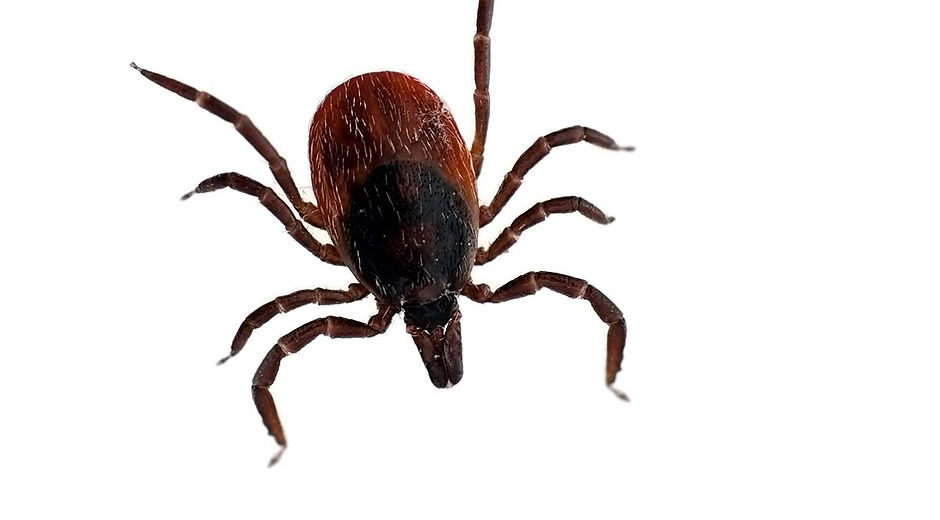
If you started seeing ticks on your pets and/or in your backyard you should immediately contact the trained professionals at Heritage Pest Control for an inspection and a customized ticks protection plan.
DEER TICKS
The loathsome deer tick, now known as the black-legged tick, is defined more by the disease it spreads than by its own characteristics. These blood-sucking members of the arachnid family were vaulted into the public consciousness in the mid-1970s when it was discovered that they are the primary (and possibly only) transmitters, or vectors, for Lyme disease.
Significantly smaller than the more commonly encountered dog tick, adult female deer ticks are about as big as a sesame seed and have reddish hind bodies with black dorsal markings. Males are slightly smaller than females and are solid dark brown.
Deer ticks live about two years and go through four life phases: egg, larva, nymph, and adult. They feed exclusively on animal blood and eat only three times during their lives: once to molt from larva to nymph; once from nymph to adult; and once as adults to lay eggs. They can contract the bacteria that causes Lyme disease from an infected host at any of these feedings, but transmit it only during the second or third. They must remain attached for at least 24 hours for the bacteria to transmit.
Lyme disease is a debilitating, though rarely fatal, infection that is often misdiagnosed because early symptoms closely resemble the flu. Victims usually have a slowly-spreading bull’s-eye-shaped rash where the tick attached, but not always. If untreated by antibiotics, patients can develop a variety of health problems, including facial paralysis, heart palpitations, arthritis, severe headaches, and neurological disorders.
For ticks control, rely on Heritage Pest Control for effective management and prevention strategies



